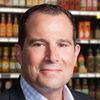
It’s time for emerging food and beverage brands to look at their categories and competitors differently.
There are a lot of data points manufacturers tend to collect and measure in the food business. They worry about ACV, market share, unaided brand awareness and more. But none of those really matter. These concepts aren’t likely to tell companies what they need to know or provide brands with the insight they must have to excel.
Economists using data collected from the U.S. Department of Agriculture estimate that the average American consumes 1,996 pounds of food per year. That’s a heck of a number. The population of the U.S. increases at around 1% per year, and that ton of food each person eats is unlikely to get any bigger.
Every day, there are new products arriving on the shelves of retailers, on the menus of restaurants and, with the growth of the direct-to-consumer channel, in peoples’ homes. All these new products coming to market are competing for a relatively finite market potential.
So what food and beverage companies really should be measuring is their brand’s “share of stomach.” That’s right — the only real measurement of value is how much of a person’s consumption the brand controls.
If a company produces salty snacks, its competitors aren’t only other salty snacks. The same holds true for dairy, frozen and any other category. A brand’s competition is not just those in its direct line of sight but includes everything that consumers may choose to eat.
The good news is that emerging brands need only capture a small share of the pie. If the average American consumes nearly a ton of food annually and there are approximately 325 million people in the U.S., that’s roughly 650 billion pounds of food consumed each year.
Looking at it this way, what should a company’s goal be? Selling 1 million pounds of food? How about 10 million or 100 million? No matter how large the number, it is likely to represent an infinitesimally small percentage of the nation’s total consumption.
Food companies’ mission is to get their products noticed, purchased and consumed. But the real battle is to get consumers to make a tradeoff. Food manufacturers need them to replace the amount they consume of other foods and drinks with their own products.
The burning question is: How does a brand win that share of stomach? There is no one path, but there are certain attributes that can help on the path to victory.
● Find an unmet need. If products fulfill something consumers want but do not have, they are in a good position. Slingshot Foods created an on-the-go yogurt drink with a pour in shot of gourmet granola thereby meeting consumers’ desire for a nutritious and satiating breakfast that can be eaten in the car.
● Be highly differentiated. The Good Crisp Company introduced a line of gluten-free, all natural stacked chips offering Pringles-loving consumers an option to indulge -- without all the added ingredients that make them feel guilty or uncomfortable.
● Tell a great story. Pavel’s Yogurt is small-batch artisan product that has been made on four continents and using the same yogurt culture for more than 100 years. The company’s namesake fled from Russia to China during the Bolshevik Revolution and started making his yogurt for a British dairy. He again fled when Mao came to power. He wound up in Brazil, where he went to work and eventually met an American school teacher. He married her and moved to San Francisco, and Pavel’s has been a Northern California staple ever since.
● Alternate channels can also help drive share of stomach. Meet consumers where they live, work, and play. This could include online, through corporate feeders, at stadiums or athletic events, on airlines and more.
● Don’t forget the obvious way. Build a product that is equal to or better than competitors and sell it for less. To me, that is the least exciting -- and the least sustainable. But it is the most path that most brands follow.
Click here to access tips that will accelerate your food or beverage brand’s growth
Elliot Begoun is the Principal of The Intertwine Group, a practice focused on accelerating the growth of emerging food and beverage brands. He helps clients gain distribution, build velocity, and win share of stomach. His articles appear in publications such as the Huffington Post, SmartBrief, and Food Dive.
